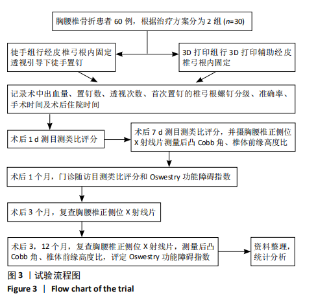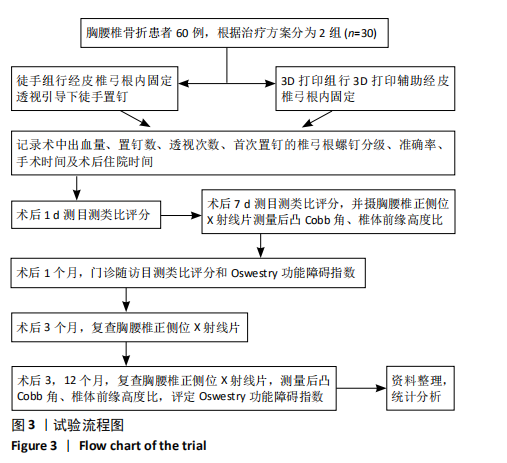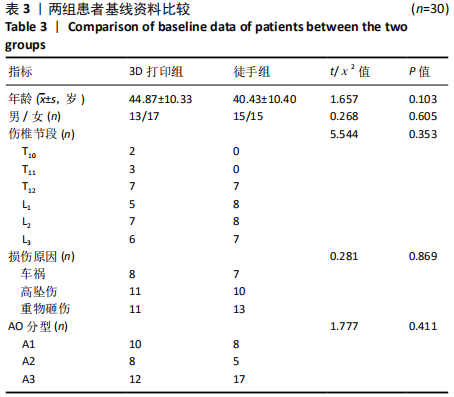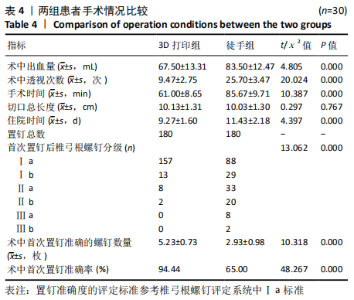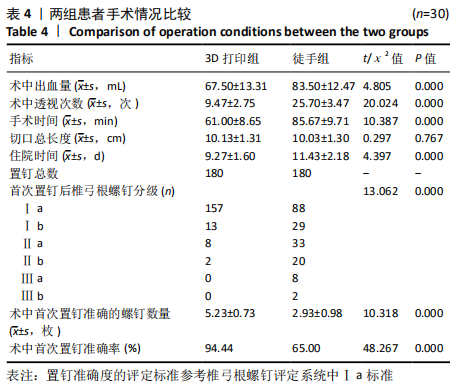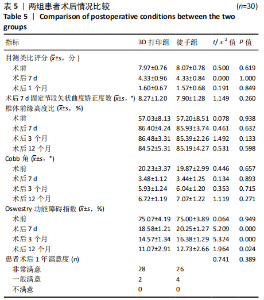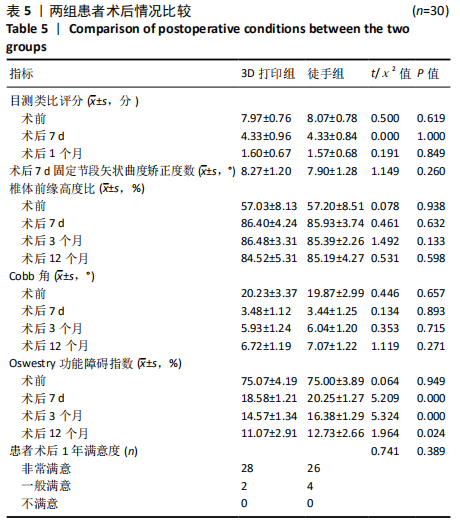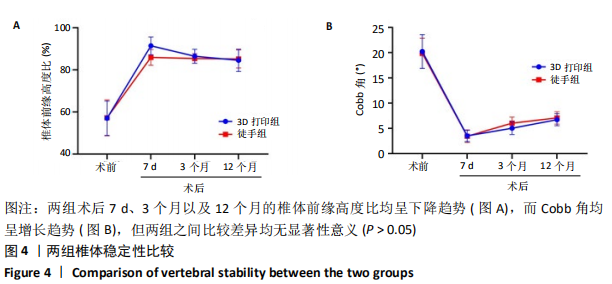[1] 金勤富.后路经伤椎置钉内固定治疗胸腰椎骨折[J].中医正骨, 2020,32(7):65-67,71.
[2] 章镇南,吴斌,董忠.福州地区老年骨折患者回顾性分析[J].中国骨质疏松杂志,2018,24(7):949-953.
[3] 王兴斌,王洪伟,陈语, 等.创伤性胸腰椎骨折的临床特点分析[J].局解手术学杂志,2017,26(2):110-114.
[4] 张志新,张生全.经皮治疗与开放治疗胸腰椎骨折疗效的Meta分析[J].实用手外科杂志,2018,32(1):90-93.
[5] 王磊,崔维,麻松, 等.经皮椎弓根钉微创手术治疗胸腰椎骨折有效性及 对疼痛、影像学指标的影响[J].中国疼痛医学杂志,2020, 26(7):510-515.
[6] 王林,吴钊.经皮与开放椎弓根钉内固定治疗胸腰椎骨折效果分析[J].宁夏医科大学学报,2020,42(5):514-516.
[7] 韩建邦,俞胜宝,汪颖峰.经皮微创单轴椎弓根螺钉内固定治疗胸腰椎骨折的短期疗效[J].安徽医药,2019,23(12):2436-2439.
[8] 穆怀昭,赵佳佳,杨朝昕,等.3-D打印技术结合经皮椎弓根螺钉内固定术治疗中老年胸腰椎爆裂骨折的疗效分析[J].中国中西医结合外科杂志,2019,25(6):1041-1045.
[9] JIANG WL, NIU GQ, ZHOU G, et al. 3D printing technology assisted the preoperative planning and application value in adult kyphoscoliosis deformity. Zhongguo Gu Shang. 2020;33(2):99-105.
[10] SHEHA ED, GANDHI SD, COLMAN MW. 3D printing in spine surgery. Ann Transl Med. 2019;7(Suppl 5):S164.
[11] ZDICHAVSKY M, BLAUTH M, KNOP C, et al.Accuracy of Pedicle Screw Placement in Thoracic Spine Fractures.Part I: Inter- and Intraobserver Reliability of the Scoring System.Eur J Trauma Emerg Surg. 2004;30(4): 556-561.
[12] ZHANG LL, NI L, CUI XD, et al. A clinic analysis of thoracolumbar vertebral fracture cascade. Zhonghua Yi Xue Za Zhi. 2018;98(23): 1844-1848.
[13] ROSENTHAL BD, BOODY BS, JENKINS TJ, et al. Thoracolumbar Burst Fractures. Clin Spine Surg. 2018;31(4):143-151.
[14] GUO LX, LI WJ. A biomechanical investigation of thoracolumbar burst fracture under vertical impact loads using finite element method. Clin Biomech (Bristol, Avon). 2019;68(8):29-36.
[15] LI B, SUN C, ZHAO C, et al. Epidemiological profile of thoracolumbar fracture (TLF) over a period of 10 years in Tianjin, China. J Spinal Cord Med. 2019;42(2):178-183.
[16] ZHAO Q, ZHANG H, HAO D, et al. Complications of percutaneous pedicle screw fixation in treating thoracolumbar and lumbar fracture. Medicine (Baltimore). 2018;97(29):e11560.
[17] ZHANG C, LIU Y. Combined pedicle screw fixation at the fracture vertebrae versus conventional method for thoracolumbar fractures: A meta-analysis. Int J Surg. 2018;53(5):38-47.
[18] TIAN F, TU LY, GU WF, et al. Percutaneous versus open pedicle screw instrumentation in treatment of thoracic and lumbar spine fractures: A systematic review and meta-analysis. Medicine (Baltimore). 2018; 97(41):e12535.
[19] GUO F, DAI J, ZHANG J, et al. Individualized 3D printing navigation template for pedicle screw fixation in upper cervical spine. PLoS One. 2017;12(2):e0171509.
[20] CLIFTON W, VLASAK A, DAMON A, et al. Freehand C2 Pedicle Screw Placement: Surgical Anatomy and Operative Technique. World Neurosurg. 2019;132(12):113.
[21] KLECK CJ, JOHNSON C, AKIYAMA M, et al. One-step Minimally Invasive Pedicle Screw Instrumentation Using O-Arm and Stealth Navigation. Clin Spine Surg. 2018;31(5):197-202.
[22] TIAN Y, ZHANG J, LIU T, et al. A Comparative Study of C2 Pedicle or Pars Screw Placement with Assistance from a 3-Dimensional (3D)-Printed Navigation Template versus C-Arm Based Navigation. Med Sci Monit. 2019;25(12):9981-9990.
[23] 边江.经皮椎弓根钉置入内固定术治疗胸腰椎骨折26例[J].安徽医药,2019,23(9):1811-1813.
[24] 孙畅,胡学昱,黄培培,等.胸腰椎骨折中椎间盘损伤对经皮椎弓根螺钉内固定术后疗效的影响[J].解放军医学院学报,2019,40(12): 1114-1117.
[25] 杨彬,王德成,陈学谦,等.经皮微创置钉和开放椎弓根螺钉内固定术治疗无神经损伤胸腰椎骨折的疗效分析[J].颈腰痛杂志, 2019,40(6):841-843.
[26] 卢洋,王瑜,李征宇,等.经皮微创椎弓根钉内固定术治疗无神经损伤不稳定胸腰椎骨折疗效临床观察[J].陕西医学杂志,2019, 48(9):1151-1154.
[27] ORIEF T, ALFAWAREH M, HALAWANI M, et al. Accuracy of percutaneous pedicle screw insertion in spinal fixation of traumatic thoracic and lumbar spine fractures. Surg Neurol Int. 2018;9(4):78.
[28] MOHANTY SP, BHAT SN, PAI KANHANGAD M, et al. Pedicle screw fixation in thoracolumbar and lumbar spine assisted by lateral fluoroscopic imaging: a study to evaluate the accuracy of screw placement. Musculoskelet Surg. 2018;102(1):47-55.
[29] DAYANI F, CHEN YR, JOHNSON E, et al. Minimally invasive lumbar pedicle screw fixation using cortical bone trajectory - Screw accuracy, complications, and learning curve in 100 screw placements. J Clin Neurosci. 2019;61(3):106-111.
[30] SADRAMELI SS, JAFRANI R, STAUB BN, et al. Minimally Invasive, Stereotactic, Wireless, Percutaneous Pedicle Screw Placement in the Lumbar Spine: Accuracy Rates With 182 Consecutive Screws. Int J Spine Surg. 2018;12(6):650-658. |
